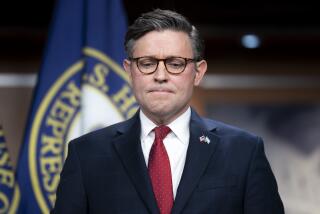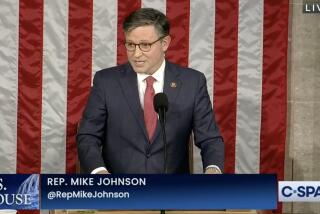Political vs. financial risk
The credit ratings firm Standard & Poor’s didn’t enhance its tarnished credibility with its decision Friday to downgrade Treasury securities from “risk-free” AAA to AA+. Having seen no evil during much of the housing boom, S&P has flipped to the other extreme in regard to Washington’s fiscal problems, declaring T-bills to be a less reliable investment than bonds issued by Luxembourg or the Isle of Man. Its overreaction prompted sell-offs in financial markets around the globe, causing billions of dollars worth of equity to evaporate.
Nevertheless, the company has a point about the exceptionally polarized and dysfunctional U.S. government. Far too many lawmakers seem to have a cavalier attitude about the commitments their predecessors have made to the people who lend to, do business with or rely on the federal government. Although Washington won’t default on its bonds, those relationships can no longer be considered “risk free.”
Credit rating agencies are supposed to make judgments about financial risks, not political ones. And on financial terms, it’s hard to justify even a slight downgrade on U.S. bonds. The 14th Amendment arguably requires that the Treasury pay bondholders ahead of any other creditor. Even with the enormous deficits the government has been running, Washington still collects far more money each month than is needed to stay current on its debt payments.
The recession, a succession of tax cuts, two simultaneous and expensive overseas wars, a new prescription drug entitlement and a surge in federal spending have all driven up the federal debt to 69% of the country’s gross domestic product, an unusually high level. But that’s far below the debt load in Greece and only a third of Japan’s.
In addition, unlike Greece and the other financially troubled countries in Europe, the United States’ central bank controls the country’s currency. As then-Federal Reserve Chairman Alan Greenspan said in 1997, “A government cannot become insolvent with respect to obligations in its own currency.” If it needs more dollars to pay its debts, it can print more. That’s a horribly inflationary policy, of course, and markets wouldn’t react kindly. Yet it’s another layer of protection against default.
One of S&P’s main complaints was that the $2.4 trillion to $2.7 trillion in deficit reduction that Congress and President Obama finally agreed to this month wasn’t enough to stop the U.S. debt from growing relative to the size of the economy. Its initial analysis, however, was based on outdated budget projections that ignored previous spending cuts, throwing its calculations off by $2 trillion. Yet it stuck by its conclusions despite the error, suggesting that the data weren’t as important as the politics.
In essence, the downgrade was a vote of no confidence in U.S. governance. That’s an understandable reaction to the spectacle of the debt ceiling negotiations, when dozens of lawmakers — egged on by a chorus of GOP presidential candidates — declared that it would be better to shut down the government and stiff some of its creditors and beneficiaries than to compromise with Obama over the size or composition of the deficit reduction package.
Despite the real problems posed by the deficit, the struggling economy and a bitterly divided government, however, the Treasury can be relied on to make payments on the debt. S&P may merely have been stating the obvious about Washington’s policymaking foibles. But by putting its imprimatur on the prevailing pessimism about the economy, the agency only exacerbated the problem.
More to Read
A cure for the common opinion
Get thought-provoking perspectives with our weekly newsletter.
You may occasionally receive promotional content from the Los Angeles Times.






